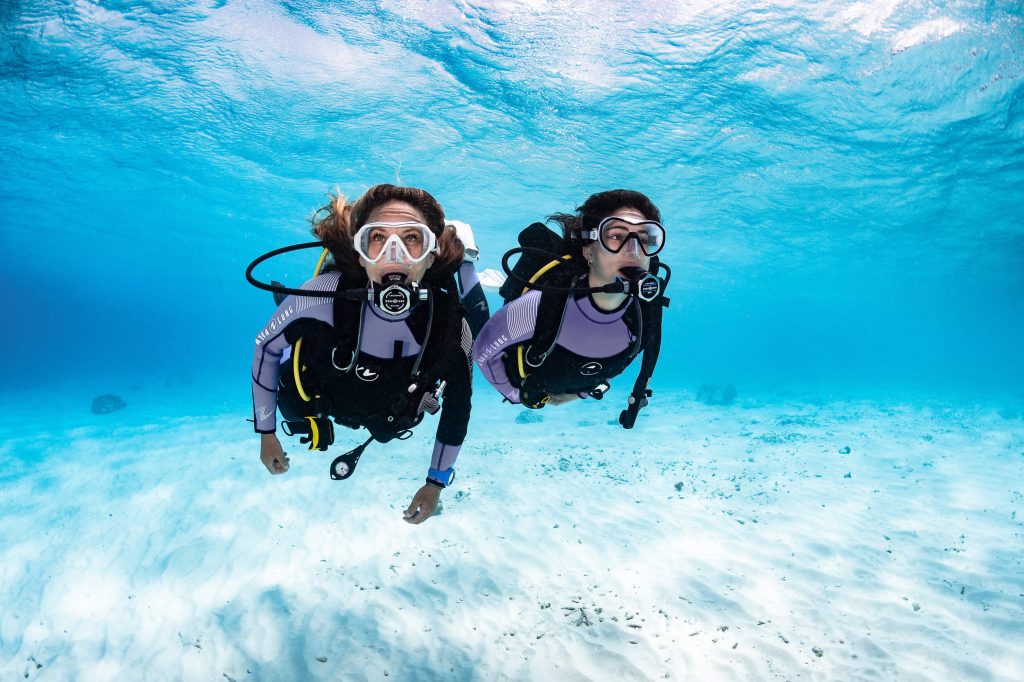
For divers, a reliable scuba compressor isn’t just a tool—it’s a lifeline. Whether you’re refilling your tank after a day of shore diving or topping up equipment on a liveaboard, the right scuba compressor delivers clean, dry, and properly pressurized air that meets strict safety standards. Unlike standard air compressors, scuba models are engineered to handle the high pressures (up to 3000 PSI) and air purity requirements critical for underwater breathing. And with portable scuba compressor options now available, divers no longer have to rely solely on dive shop facilities—opening up new possibilities for remote trips and boat-based adventures.
The key to choosing the perfect scuba compressor lies in understanding three non-negotiable factors: air purity (meets Grade E or higher standards), pressure output (matches your tank’s specifications), and usability (portable vs. stationary, based on your diving style). A subpar model might deliver contaminated air or fail mid-fill, putting your safety at risk.
In this guide, we’ll break down everything you need to know—from core specs and safety standards to scenario-based recommendations—to help you invest in a scuba compressor that’s safe, reliable, and tailored to your needs.
I. What Is a Scuba Compressor? (And Why It’s Not Like Standard Compressors)
A scuba compressor is a specialized device designed to compress ambient air into scuba tanks at high pressures (typically 2000–3000 PSI) while ensuring the air is free of contaminants like oil, moisture, and particulate matter. Unlike standard air compressors (used for tools or inflators), scuba models must adhere to strict breathing air standards—because even trace amounts of oil or water vapor can cause lung irritation, corrosion in tanks, or even life-threatening issues underwater.
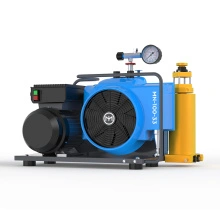
1.1 The Core Difference: Breathing Air Purity
The biggest distinction between a scuba compressor and a standard compressor is air purity. All scuba compressors must meet Grade E breathing air standards (per CGA G-7.1 or EN 12021), which set limits on:
Oil vapor (maximum 0.1 mg/m³)—standard compressors often have oil carryover, which is toxic when inhaled.Carbon monoxide (maximum 10 ppm)—a colorless, odorless gas that can cause hypoxia underwater.Moisture (maximum dew point of -40°C at 3000 PSI)—moisture leads to tank rust and freeze-ups in cold water.Particulate matter (no visible dust or debris)—prevents clogging of regulators and damage to lungs.To achieve this, scuba compressors include specialized filtration systems (like coalescing filters and carbon beds) that standard models lack. This makes them more expensive—but non-negotiable for diver safety.
1.2 Types of Scuba Compressors
Scuba compressors fall into two main categories, based on portability and use case. Your choice will depend on whether you dive locally, travel frequently, or run a dive operation:
- Stationary Scuba Compressors: Designed for dive shops, marinas, or home use (if you have dedicated space). They’re larger (often 50+ pounds), more powerful, and can fill multiple tanks per hour. Most use 220V electricity or gas and include large air storage tanks to reduce cycle time.
- Portable Scuba Compressors: Built for divers who travel, dive from boats, or explore remote locations. They’re lightweight (20–40 pounds), run on 110V electricity, 12V DC (car batteries), or gas, and can fit in the trunk of a car or a boat’s storage compartment. While slower than stationary models (filling a 80cuft tank in 15–30 minutes), they offer unmatched convenience.
II. Critical Specs to Evaluate in a Scuba Compressor
Not all scuba compressors are created equal. These four specs will determine if a model is safe, efficient, and compatible with your diving gear:
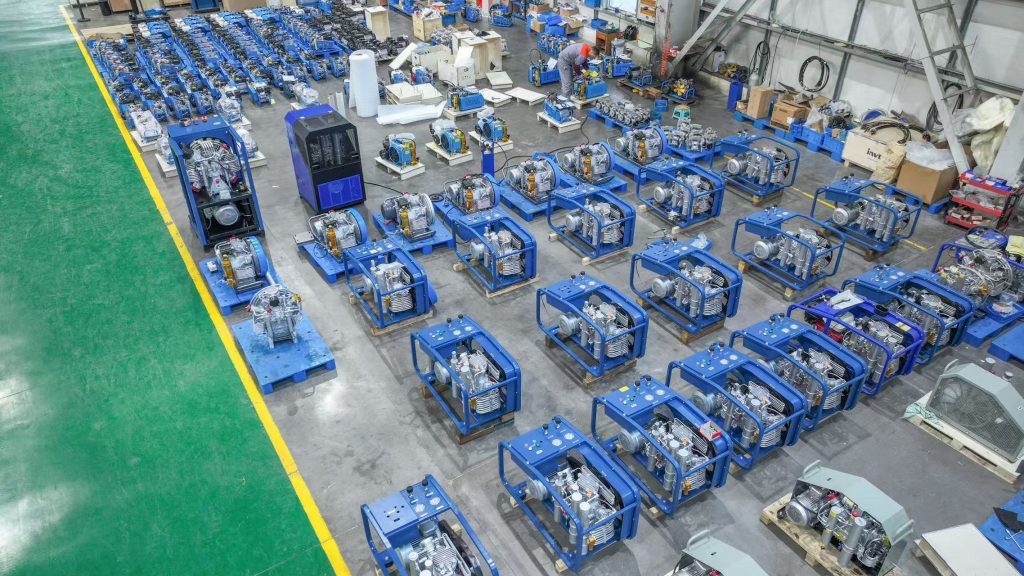
2.1 Air Purity and Filtration System
As mentioned, Grade E breathing air is mandatory. To ensure this, look for a compressor with a multi-stage filtration system that includes:
A pre-filter (to remove dust and large particles).A coalescing filter (to trap oil vapor and fine mist).A carbon filter (to absorb hydrocarbons and odors).A desiccant dryer (silica gel or molecular sieve) to remove moisture—critical for cold-water diving or humid climates.Pro tip: Choose a model with filter replacement indicators (visual or audible) to ensure you never use expired filters—this is a common cause of contaminated air.
2.2 Pressure Output (PSI) and Volume (CFM)
Your scuba compressor must match the pressure rating of your tanks. Most recreational scuba tanks are rated for 3000 PSI (standard) or 3300 PSI (high-pressure). Look for a compressor with a maximum output of at least 3000 PSI—higher is better if you use high-pressure tanks.
CFM (cubic feet per minute) measures how fast the compressor fills tanks. For reference:
Portable Scuba Compressors: 1–3 CFM (fills an 80cuft tank in 15–30 minutes).Stationary Scuba Compressors: 4–10 CFM (fills an 80cuft tank in 5–10 minutes, ideal for multiple tanks).Don’t prioritize speed over purity—even a fast compressor is useless if it delivers contaminated air.
2.3 Power Source
Power source depends on where you’ll use the compressor most. Options include:
Electric (110V/220V): Most common for stationary models (220V) and small portable ones (110V). Quiet and low-maintenance, but requires access to an outlet—great for home use or dive shops.12V DC: Designed for portable scuba compressors used with car batteries or boat electrical systems. Perfect for remote shore dives or boat trips where AC power is unavailable.
Gas-Powered (Petrol/Diesel): For heavy-duty stationary models or large portable ones. Used in remote locations (e.g., island dive resorts) without electricity. Louder and requires fuel, but offers maximum versatility.2.4 Cooling SystemCompressing air generates extreme heat—if not cooled, the compressor can overheat and fail, or the hot air can damage filters. Look for:
2.4 Cooling System
Compressing air generates extreme heat—if not cooled, the compressor can overheat and fail, or the hot air can damage filters. Look for:
Air-Cooled: Most portable and small stationary models. Use fans to circulate air over heat sinks. Lightweight and low-maintenance, but less efficient for continuous use (e.g., filling 10+ tanks in a row).
Water-Cooled: Large stationary models. Use a water jacket or external water source to cool the pump. More efficient for heavy use, but larger and requires a water supply.
III. 5 Key Factors to Choose the Right Scuba Compressor
Now that you know the specs, let’s match the compressor to your specific needs. These factors will ensure you don’t overspend on features you don’t need or buy a model that’s too weak for your diving style:
3.1 Match to Your Diving Frequency and Volume
How often you dive and how many tanks you need to fill will dictate the compressor’s size and power:
Casual Divers (1–2 tanks/week): A portable scuba compressor (1–2 CFM, 110V/12V) is ideal. It’s affordable, easy to store, and enough for personal use.
Frequent Divers (3+ tanks/week) or Small Dive Clubs: A mid-size stationary model (4–6 CFM, 220V) balances speed and space. It can handle regular use without overheating.
Dive Shops or Resorts (10+ tanks/day): A heavy-duty stationary model (8–10 CFM, water-cooled, gas/electric) is mandatory. Look for models with large storage tanks to keep up with demand.
3.2 Prioritize Portability (If You Travel or Dive Remotely)
For divers who love boat trips, road trips, or international travel, a portable scuba compressor is a game-changer. When evaluating portability:
Weight: Aim for under 35 pounds—anything heavier is hard to carry or fit in luggage.
Size: Look for compact designs (e.g., 18x12x10 inches) that fit in car trunks or boat lockers.
Power Flexibility: Models that run on both 110V and 12V are best for international travel (use a voltage converter) and remote dives (use a car battery).Example: A well-designed portable scuba compressor (2 CFM, 3000 PSI, 32 pounds) can be packed in a suitcase for a trip to Bali, then powered by a rental car battery for shore dives.
3.3 Check for Safety Features
Scuba compressors handle high pressures and breathing air—safety features are non-negotiable. Look for:
Pressure Relief Valve: Automatically releases excess pressure if the tank is overfilled (prevents explosions).
Thermal Cutoff Switch: Shuts down the compressor if it overheats (prevents fire and pump damage).
Pressure Gauge and Regulator: Accurately monitors pressure to avoid underfilling or overfilling tanks.
Oil Level Sensor: For oil-lubricated models—alerts you if oil is low (prevents pump seizure).
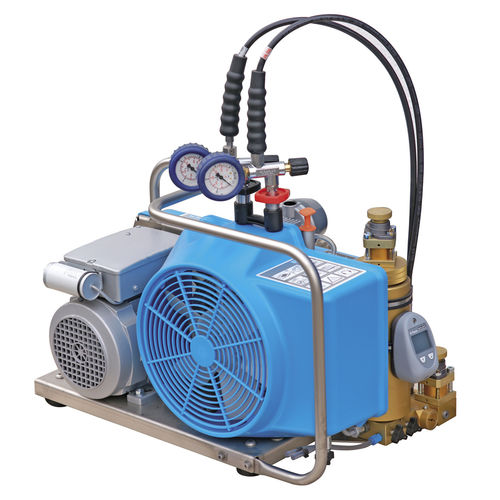
3.4 Consider Maintenance Needs
Regular maintenance ensures your scuba compressor lasts and delivers clean air. Maintenance requirements vary by model:
Oil-Lubricated Compressors: Require oil changes every 50–100 hours of use and filter replacements every 200 hours. More durable (10+ years) but higher maintenance.
Oil-Free Compressors: No oil changes—ideal for casual divers or those who hate maintenance. Filters still need replacement every 200 hours, and lifespan is shorter (3–5 years).Pro tip: Choose a model with easy-to-access filters and oil caps—this makes maintenance faster and less messy.
3.5 Set a Realistic Budget
Scuba compressors are an investment, but you can find options at every price point:
$1,000–$3,000: Portable scuba compressors (oil-free or oil-lubricated, 1–3 CFM). Ideal for casual divers and travelers.
$3,000–$8,000: Mid-size stationary models (4–6 CFM, 220V). Great for frequent divers and small dive clubs.
$8,000+: Heavy-duty stationary models (8–10 CFM, water-cooled). For dive shops, resorts, and industrial use.
Avoid cheap models under $1,000—they often skip critical filtration or safety features, putting your health at risk.
How often you dive and how many tanks you need to fill will dictate the compressor’s size and power:
Casual Divers (1–2 tanks/week): A portable scuba compressor (1–2 CFM, 110V/12V) is ideal. It’s affordable, easy to store, and enough for personal use.
Frequent Divers (3+ tanks/week) or Small Dive Clubs: A mid-size stationary model (4–6 CFM, 220V) balances speed and space. It can handle regular use without overheating.
Dive Shops or Resorts (10+ tanks/day): A heavy-duty stationary model (8–10 CFM, water-cooled, gas/electric) is mandatory. Look for models with large storage tanks to keep up with demand.3.2 Prioritize Portability (If You Travel or Dive Remotely)For divers who love boat trips, road trips, or international travel, a portable scuba compressor is a game-changer. When evaluating portability:
Weight: Aim for under 35 pounds—anything heavier is hard to carry or fit in luggage.
Size: Look for compact designs (e.g., 18x12x10 inches) that fit in car trunks or boat lockers.
Power Flexibility: Models that run on both 110V and 12V are best for international travel (use a voltage converter) and remote dives (use a car battery).Example: A well-designed portable scuba compressor (2 CFM, 3000 PSI, 32 pounds) can be packed in a suitcase for a trip to Bali, then powered by a rental car battery for shore dives.
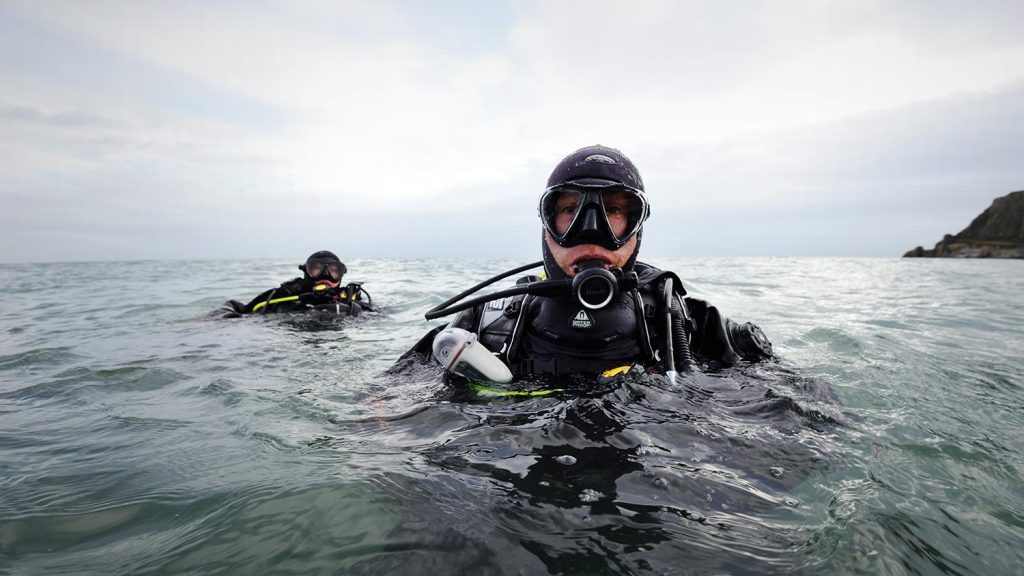
IV. Scenario-Based Scuba Compressor Recommendations
To make your search easier, we’ve curated models for the most common diving needs—each meeting Grade E air standards and prioritizing safety:
4.1 Casual Divers/Travelers: Ultra-Portable Oil-Free Model
What to look for: 1–2 CFM, 3000 PSI, 110V/12V dual power, weight under 35 pounds, and a built-in carry handle. Examples include trusted brands like Bauer with models such as the Junior II.
Why it works: Perfect for weekend divers who want to fill tanks at home or on the road. The oil-free design means no maintenance stops during trips, and dual power lets you use it with a hotel outlet or car battery. Fills an 80cuft tank in 20–25 minutes—fast enough for personal use.
Price range: $1,200–$2,500. Look for models with a 2-year warranty (covers parts and labor).
4.2 Frequent Divers/Small Dive Clubs: Mid-Size Stationary Model
What to look for: 4–6 CFM, 3300 PSI, 220V, oil-lubricated, air-cooled, and a 10-gallon storage tank. 2025 recommended models include reputable options like the Coltri MCH 6/ET.
Why it works: The 10-gallon storage tank reduces pump cycle time, letting you fill 3–4 tanks in an hour. Oil-lubricated design ensures durability for regular use (5+ hours/week), and the high-pressure output works with standard and high-pressure tanks. Includes a multi-stage filtration system with replacement indicators.
Price range: $4,000–$6,500. Prioritize models with a 5-year warranty on the pump.
4.3 Dive Shops/Resorts: Heavy-Duty Water-Cooled Model
What to look for: 8–10 CFM, 3300 PSI, dual power (electric/gas), water-cooled, and a 50-gallon storage tank. 2025 industry favorites include industry leaders like the Bauer K100.
Why it works: Designed for 24/7 use, the water-cooled system prevents overheating even during peak hours. The 50-gallon tank lets you fill 15+ tanks per hour, and dual power ensures you never run out of air (switch to gas if the power goes out). Includes a redundant filtration system and digital pressure controls for accuracy.
Price range: $10,000–$15,000. Invest in a model with on-site service support (critical for dive operations).
4.4 Remote Diving/Boat Use: Gas-Powered Portable Model
What to look for: 2–3 CFM, 3000 PSI, gas-powered (petrol), weight under 40 pounds, and a weatherproof design. 2025 standouts include reliable choices like the Coltri Baja.
Why it works: No electricity needed—perfect for island resorts, remote dive camps, or liveaboards. The weatherproof design handles saltwater and rain, and the gas engine runs for 4–5 hours on a single tank of fuel. Fills an 80cuft tank in 15–20 minutes, making it ideal for boat-based dive trips.
Price range: $2,800–$4,000. Look for models with a low-noise engine (important for liveaboards).

V. Common Myths About Scuba Compressors (Debunked)
Misinformation about scuba compressors can lead to unsafe choices. Let’s set the record straight:
Myth 1: A Standard Air Compressor Can Be Used for Scuba Tanks
False. Standard compressors lack the filtration needed to remove oil and moisture, and their pressure output is too low (most max out at 150 PSI). Using a standard compressor will contaminate your tank and put you at risk of lung damage or regulator failure.
Myth 2: Portable Scuba Compressors Are Less Safe Than Stationary Ones
False. Modern portable models meet the same Grade E air standards as stationary ones. The only difference is speed—portable models are slower, but just as safe if maintained properly. Look for portable models with the same safety features (pressure relief valve, thermal cutoff) as stationary ones.
Myth 3: Oil-Free Compressors Deliver Cleaner Air Than Oil-Lubricated Ones
False. Both can deliver Grade E air if their filters are maintained. Oil-lubricated models use seals to prevent oil carryover, and their filtration systems trap any trace amounts. Oil-free models have no oil to begin with, but their filters still need replacement to remove moisture and debris.
Myth 4: You Can Overfill Tanks for Longer Dives
False. Overfilling a tank beyond its rated pressure (e.g., 3000 PSI for a standard tank) can cause the tank to rupture, especially if it’s old or corroded. Always fill tanks to their rated pressure—use a high-pressure tank if you need longer dive times.
FAQ About Scuba Compressors
Q1: How often should I test the air purity of my scuba compressor?
At least once a year, or after every 500 hours of use—whichever comes first. Send a sample of the compressed air to a certified lab (e.g., CGA-accredited) for testing. For dive shops, monthly testing is recommended to comply with safety regulations.
Q2: Can I use my portable scuba compressor with international electrical outlets?
Yes, if it’s dual-voltage (110V/220V) and you use a plug adapter. Most modern portable models are dual-voltage—check the specs before buying. Avoid using voltage converters (they can damage the compressor) and stick to plug adapters.
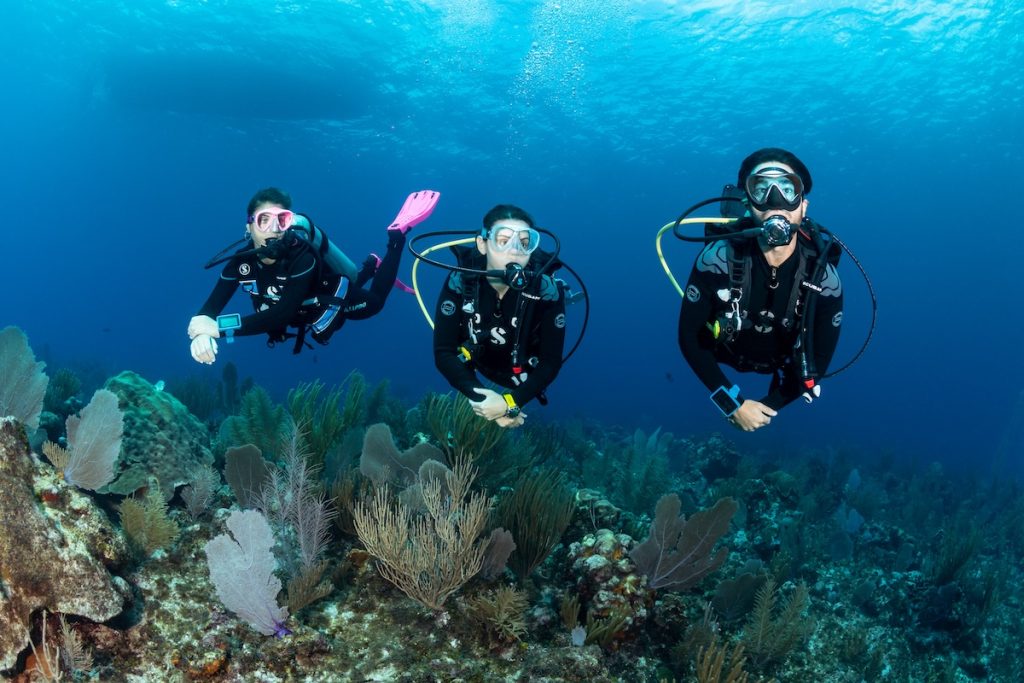
Q3: How do I store my scuba compressor when not in use?
Store it in a dry, cool place (away from direct sunlight and moisture). For oil-lubricated models, run the compressor for 5 minutes to circulate oil before storing. For portable models, empty the fuel tank (if gas-powered) to prevent leaks and evaporation.
Q4: Can I fill different tank sizes with the same scuba compressor?
Yes, as long as the compressor’s pressure output matches the tank’s rated pressure. Most scuba compressors work with standard tank sizes (60cuft, 80cuft, 100cuft) and high-pressure tanks (3300 PSI). Use a compatible fill whip (hose) for different tank valves (e.g., DIN vs. Yoke).
Q5: What should I do if my compressor’s pressure gauge is inaccurate?
Stop using the compressor immediately—an inaccurate gauge can lead to underfilling or overfilling. Have the gauge calibrated by a certified technician (most dive equipment shops offer this service). If calibration isn’t possible, replace the gauge—don’t risk your safety.
Final Thoughts: Safety First, Convenience Second
When it comes to scuba compressors, safety always comes before speed, portability, or price. A cheap or poorly maintained compressor can ruin a dive trip—or worse, put your life at risk. By focusing on air purity (Grade E standards), pressure output, and safety features, you’ll choose a model that you can trust underwater.
At Minnuo, we design our scuba compressors with diver safety as the top priority. Whether you’re a casual traveler needing a portable scuba compressor or a dive shop owner investing in an industrial model, every Minnuo unit undergoes rigorous testing to meet Grade E air standards and includes redundant safety features. We use high-quality filters, durable pumps, and user-friendly maintenance designs—so you can focus on what matters most: exploring the underwater world.

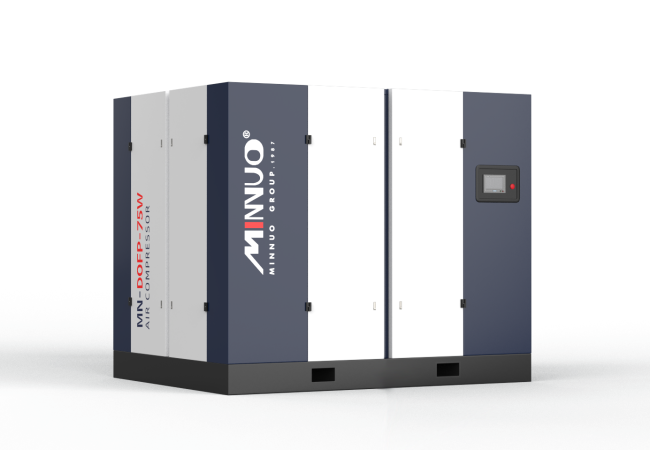
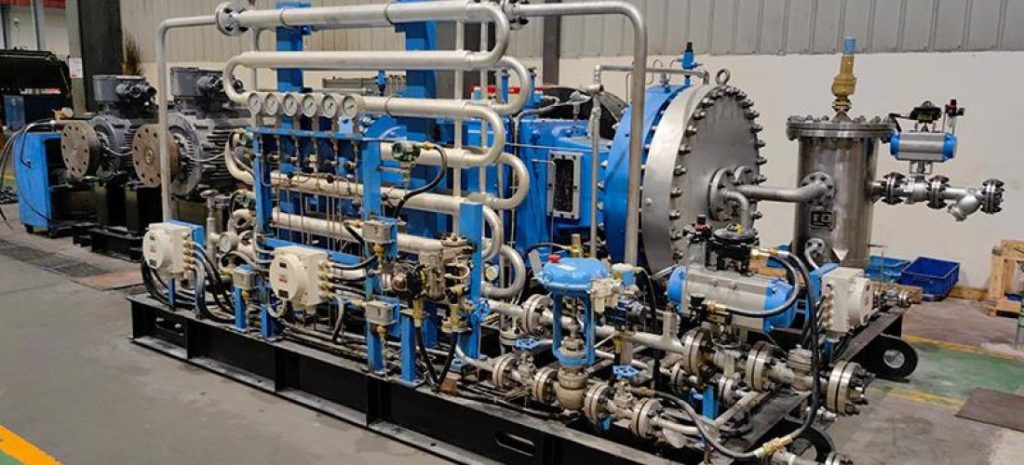
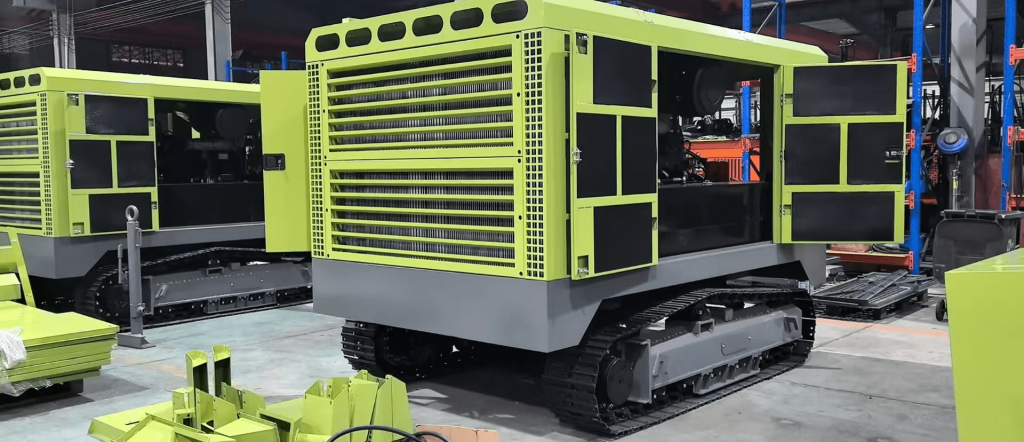

 Email
Email sales:+86 15366749631
sales:+86 15366749631

